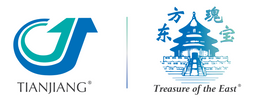Two Cases, Two Herbs
by Craig Williams
One of my favorite characteristics of both Chinese medicine and acupuncture is their ability to become catalysts for deep, transformational healing. It is not uncommon to see photos in magazines or online featuring a patient covered in 10-15 needles; or a massive wall of bottled herbs used to create a mysterious, complex herbal formula. But what interests me more is the use of two to three needles or two to three herbs to stimulate a restoration of balance within a patient's life.
With that said, let's explore the use of a time-honored, two-herb formula in two unique cases that reflect the power of simple approaches in the clinical environment.
Two Powerful Herbs
The formula Shao Yao Gan Cao Tang is one of my favorite two-herb formulas which has a shockingly wide clinical application. Shao Yao Gan Cao Tang consists of the medicinals Bai Shao and Gan Cao. This simple formula is traditionally dosed at six to 30 grams of Bai Shao and six to 15 grams of Gan Cao.
The traditional actions of this formula include softening the liver, nourishing the blood, nourishing yin, moderating painful spasms, relieving pain, harmonizing the middle jiao, and replenishing body fluids.
The most common syndromes for which Shao Yao Gan Cao Tang is effective are pain in the calves / legs due to blood deficiency, cramps in the hands or abdomen that improve with pressure, insufficiency of body fluids, and disharmony between the liver and the spleen. Some of the clinical manifestations of the above syndromes include abdominal pain, irritability, spasms of the lower back / legs / calf muscles, restless leg syndrome, weak legs, hypertonicity of the extremities with difficult flexion / extension, shoulder pain, sciatic pain, headache, coughing, hiccups, and constipation. On physical examination, the tongue can be normal to reddish with potentially a yellow coating or no coating; pulse is typically rapid and wiry.
After examining the simple ingredients in Shao Yao Gan Cao Tang, it is fascinating to see the wide spectrum of clinical applications! The following two case studies reflect interesting ways Shao Yao Gan Cao Tang can be used and how simple modifications can be used to further widen its clinical effectiveness.
Case #1: 45-Year-Old Female
The patient recently experienced knee replacement surgery in one leg. Six weeks post-surgery, the patient was still experiencing significant swelling in the leg; as well as radiating sensations of heat and pain traveling from the incision area into the calf area. Her physician was not concerned and recommended she use ice therapy and continue her physical therapy sessions.
Her PT was concerned that because of her swelling and pain, she would be unable to continue the exercises needed during this critical post-surgery window. Due to the pain in her leg, the patient requested herbal therapies in lieu of acupuncture.
On examination, the patient's tongue was a normal pink color and regular coating; pulse was wiry. No other significant symptoms were present.
The formula Shao Yao Gan Cao Tang was administered in capsules using concentrated extract form dosed at six capsules BID. After five days on Shao Yao Gan Cao Tang, the swelling had reduced significantly according to feedback from the PT, and the patient's pain was substantially reduced as well. The PT was extremely pleased with this quick progress, as this allowed the patient to continue more aggressive PT sessions to increase range of motion.
After 14 days of Shao Yao Gan Cao Tang, swelling was completely resolved and the patient was no longer experiencing radiating pains throughout the leg. The pain was now low-grade and localized at the surgery site, which both her physician and PT expected due to intensive PT sessions. Due to the reduction in pain and swelling, the patient was able to continue with PT sessions and after four weeks of taking Shao Yao Gan Cao Tang, the patient was not experiencing any pain and actively continuing her PT sessions.
Case #2: 35-Year-Old Male
The patient was experiencing pain / spasms in the calf muscles post-running. The patient was hydrating appropriately before and after the run, and administering self-massage / foam rolling post-run; however, the pain was not resolving.
Upon examination, the patient's tongue was normal pink with normal coating, pulse was slow and slippery; no other significant symptoms were present. One key clinical factor was the season: the patient was training in extremely high temperatures and although striving to adequately hydrate, was losing significant amounts of body fluids.
This presentation is a textbook case for the use of Shao Yao Gan Cao Tang. This formula was administered in capsule form of a concentrated extract dosed at three capsules BID. After five days of capsule extract, the patient reported that pain had significantly reduced; however, spasms were still occurring sporadically throughout the day.
The formula was modified by the addition of two herbs: Niu Xi and Mu Gua. Niu Xi quickens the blood, supplements the liver / kidneys, and strengthens sinews and bones. Mu Gua soothes the sinews, quickens the blood, transforms dampness, and harmonizes the stomach. Formula medication was administered in capsule form dosed at three capsules BID.
After five days of modified Shao Yao Gan Cao Tang, the patient reported that both pain and spasms had completely resolved. He continued the modified formula for two weeks after the resolution of symptoms. On a four-week check-up, the patient reported that he was pain free and experiencing no spasms.
Craig Williams is a licensed acupuncturist, clinical herbalist, ACE-certified health coach and certified holistic nutritionist specializing in Ayurveda, Traditional Chinese Medicine, and nutrition. This article first appeared in Acupuncture Today and is reproduced here with permission from the author.



















